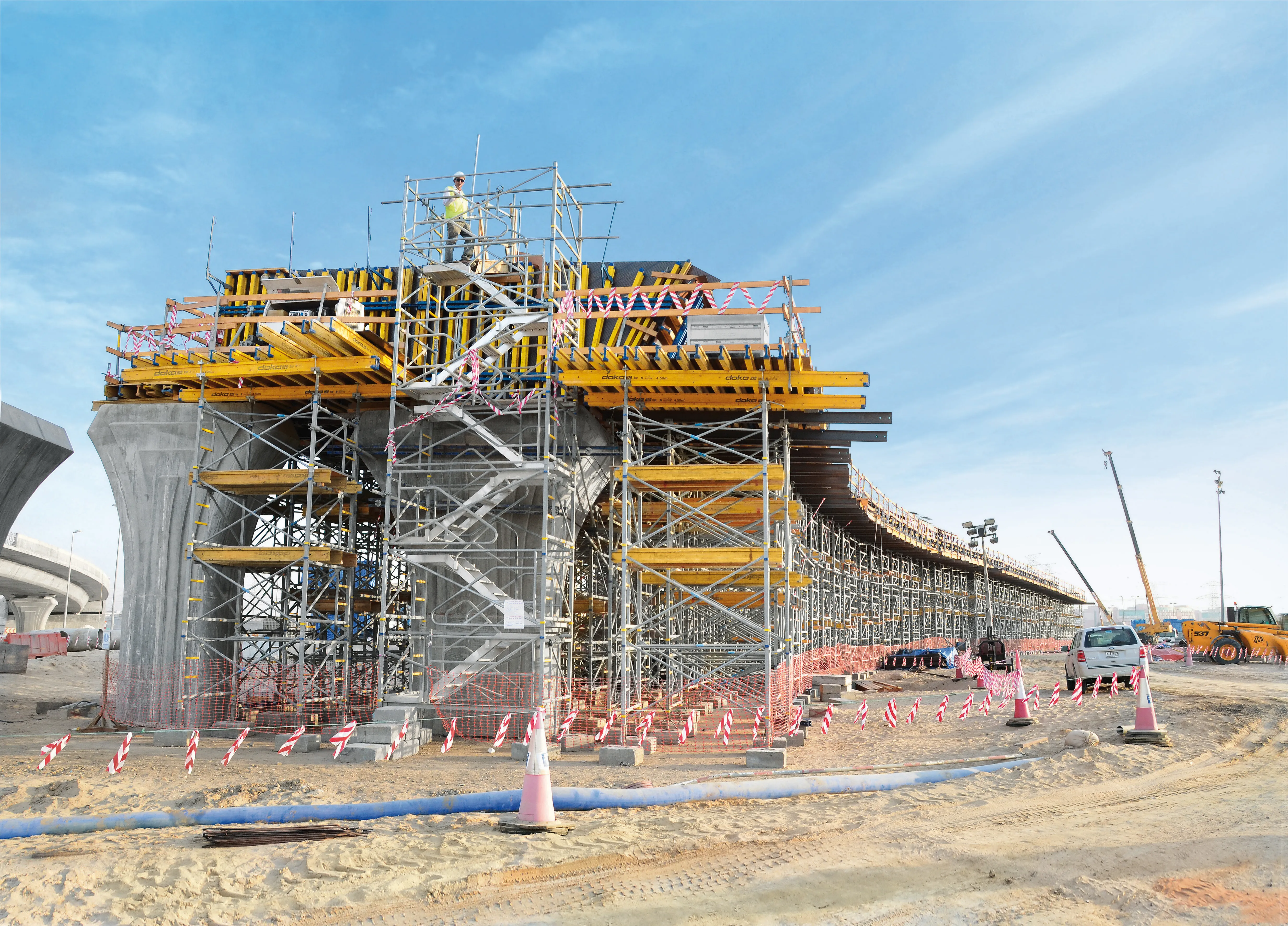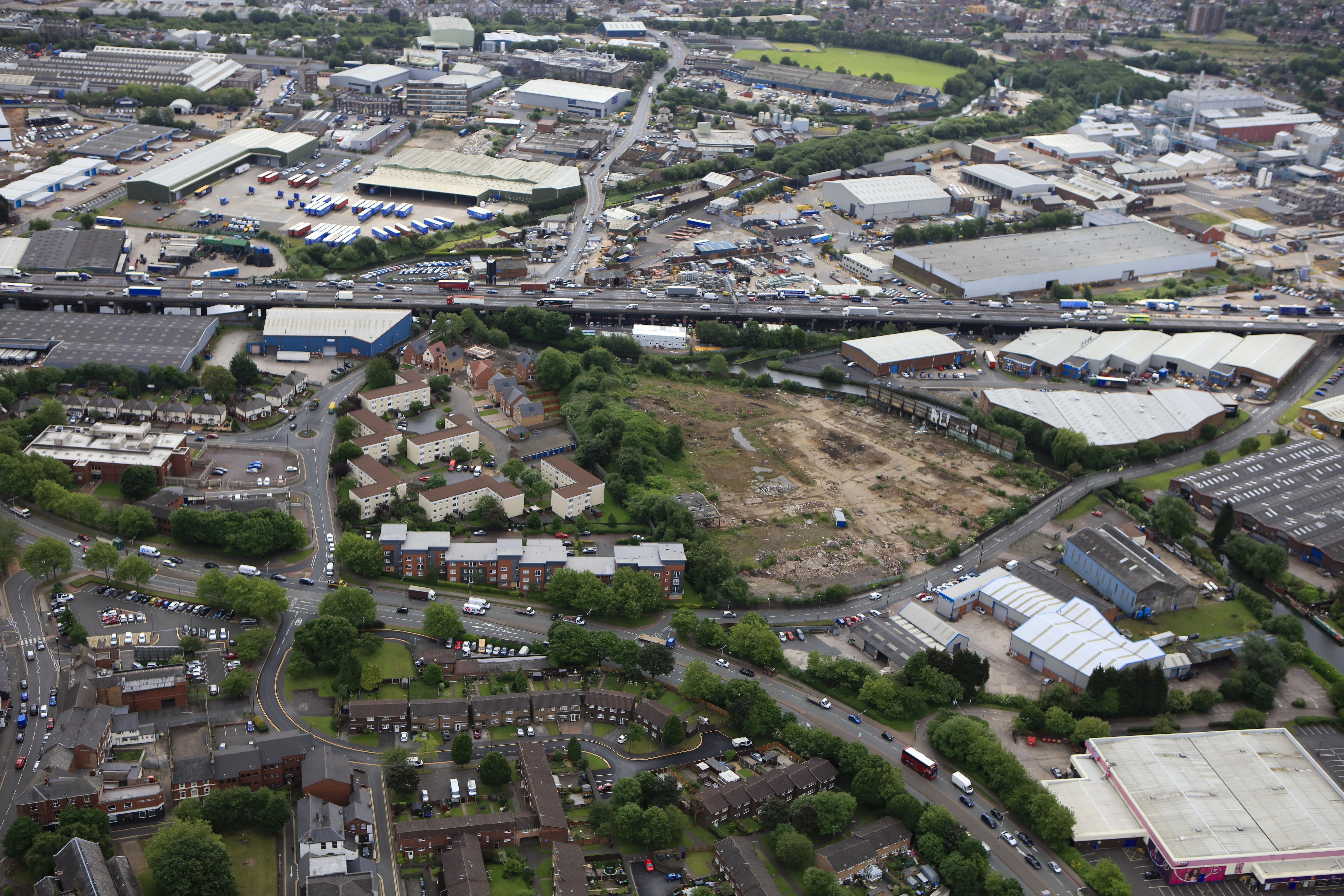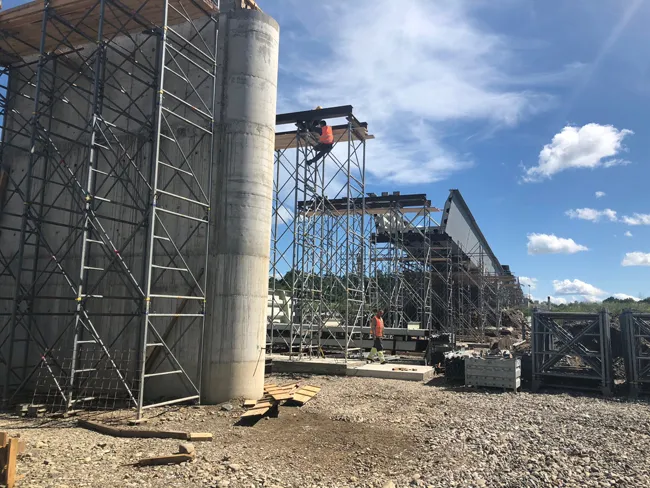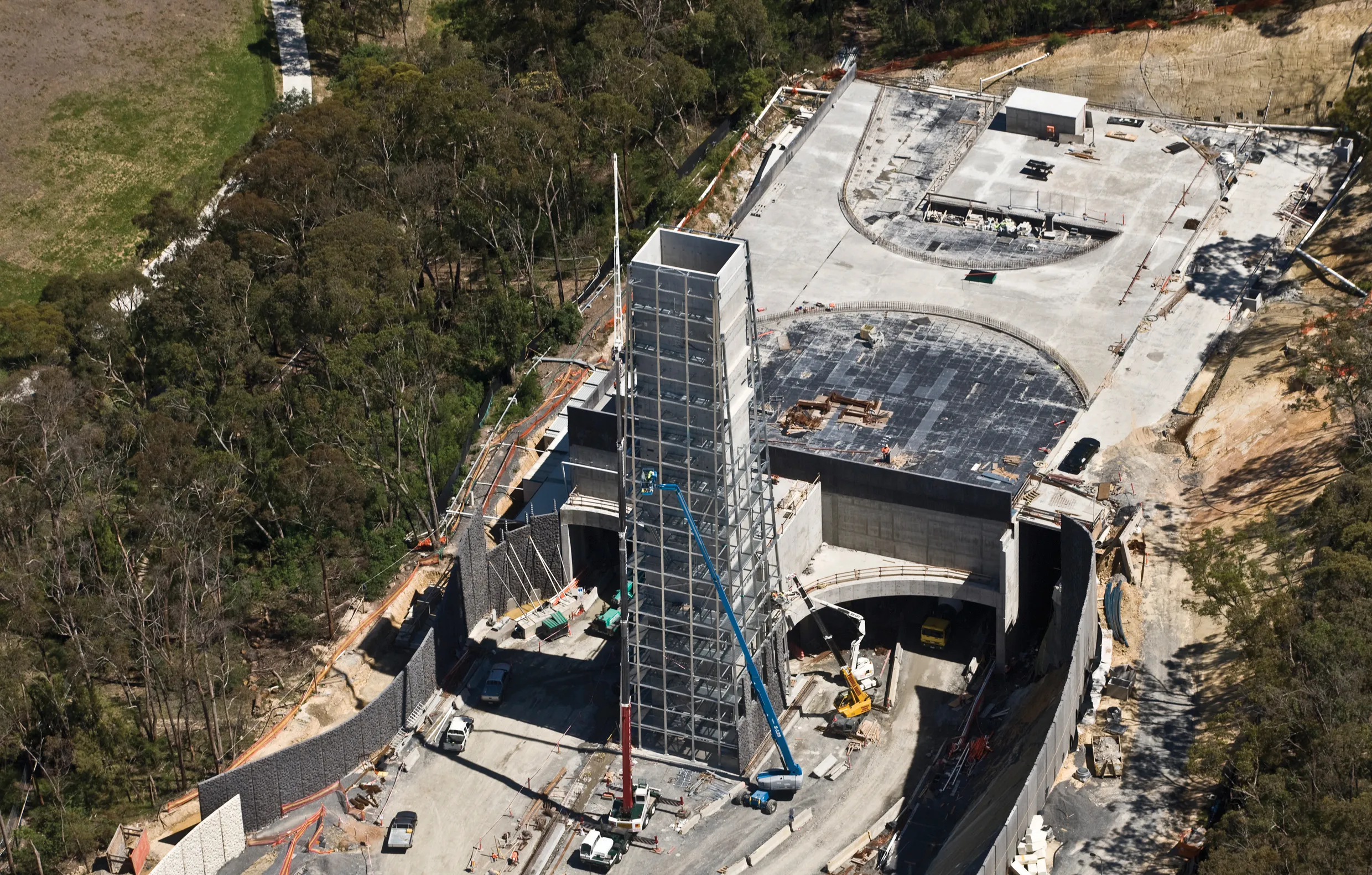Hydrodemolition played a vital role in the repairs and strengthening of the multi-span Rio Verde Viaduct, one of the tallest in Europe, that carries the busy dual two-lane A15/E33 Autostrada della Cisa over a steep-sided valley in the municipality of Pontremoli, north-west Italy. Conjet hydrodemolition equipment was used to remove damaged concrete from the faces of the viaduct's rectangular concrete piers, which rise up to 136m from the valley bottom to the steel deck. A new and thicker concrete skin was th
July 17, 2012
Read time: 3 mins

Hydrodemolition played a vital role in the repairs and strengthening of the multi-span Rio Verde Viaduct, one of the tallest in Europe, that carries the busy dual two-lane A15/E33 Autostrada della Cisa over a steep-sided valley in the municipality of Pontremoli, north-west Italy.
186 Conjet hydrodemolition equipment was used to remove damaged concrete from the faces of the viaduct's rectangular concrete piers, which rise up to 136m from the valley bottom to the steel deck. A new and thicker concrete skin was then applied.
The 960m long twin steel deck viaduct, supported on eight reinforced concrete hollow pillars, is a major structure in the link between Parma and La Spezia on Italy's Mediterranean coast, 100km south of Genova.
The spectacular viaduct was opened in 1975, but inspection by maintenance engineers showed the bridge piers were suffering from extensive calcium chloride decay, forcing the Italian Highways Authority and the Highway Engineering Department of Cisa to carry out extensive repairs and strengthening.
The specialist hydrodemolition contractor SEI-Idrojet, working for the main viaduct repair contractor A.B.C.Construczioni, carried out the concrete removal on one pier at a time. The repairs were performed from a special, purpose-built cradle and working platform that wrapped round all four sides of the piers (21m long, 8.5m wide at the base and tapering to 2.5 wide at the apex). The ends of the platform were adjustable to compensate for the changing width of the piers.
Conjet modified a standard robot feedbeam to fit onto and run along a rack on the inner sides of the platform, and a Conjet computer control unit, also mounted on the platform, was used to control the feedbeam and integral jetting nozzle.
A Conjet 345-400kW Powerpack at ground level provided the high pressure water at 1,000bar and flow of 200litres/min to the feedbeam's nozzle. The feedbeam and nozzle, travelling back and forth along the platform's rack, selectively removed damaged concrete to a depth of 70mm and below any exposed reinforcing. The process continued on one face of a pier as the platform was slowly raised to the top.
After concrete removal from one face, the platform was lowered and the Conjet feedbeam moved to another side of the platform for the process to be repeated on all four faces. SEI-Idrojet operations and site manager Enrico Mariotti was responsible for devising and controlling the hydrodemolition process.
On completion of concrete removal another team followed on fixing additional reinforcement in stages to all sides of the tapering pier. Shuttering panels 1.8m high were then fixed round all faces to support a new 220mm thick skin of self-compacting concrete pumped into the formwork from ground level. After the concrete had set the formwork was removed and repositioned for the next 1.8m lift for the process to be repeated to the top of the pier.
On completion of repairing and strengthening a pier with an additional layer of concrete, the working platform was dismantled and re-erected on the next and then subsequent piers for the hydrodemolition and concrete repair process to be repeated.
The 960m long twin steel deck viaduct, supported on eight reinforced concrete hollow pillars, is a major structure in the link between Parma and La Spezia on Italy's Mediterranean coast, 100km south of Genova.
The spectacular viaduct was opened in 1975, but inspection by maintenance engineers showed the bridge piers were suffering from extensive calcium chloride decay, forcing the Italian Highways Authority and the Highway Engineering Department of Cisa to carry out extensive repairs and strengthening.
The specialist hydrodemolition contractor SEI-Idrojet, working for the main viaduct repair contractor A.B.C.Construczioni, carried out the concrete removal on one pier at a time. The repairs were performed from a special, purpose-built cradle and working platform that wrapped round all four sides of the piers (21m long, 8.5m wide at the base and tapering to 2.5 wide at the apex). The ends of the platform were adjustable to compensate for the changing width of the piers.
Conjet modified a standard robot feedbeam to fit onto and run along a rack on the inner sides of the platform, and a Conjet computer control unit, also mounted on the platform, was used to control the feedbeam and integral jetting nozzle.
A Conjet 345-400kW Powerpack at ground level provided the high pressure water at 1,000bar and flow of 200litres/min to the feedbeam's nozzle. The feedbeam and nozzle, travelling back and forth along the platform's rack, selectively removed damaged concrete to a depth of 70mm and below any exposed reinforcing. The process continued on one face of a pier as the platform was slowly raised to the top.
After concrete removal from one face, the platform was lowered and the Conjet feedbeam moved to another side of the platform for the process to be repeated on all four faces. SEI-Idrojet operations and site manager Enrico Mariotti was responsible for devising and controlling the hydrodemolition process.
On completion of concrete removal another team followed on fixing additional reinforcement in stages to all sides of the tapering pier. Shuttering panels 1.8m high were then fixed round all faces to support a new 220mm thick skin of self-compacting concrete pumped into the formwork from ground level. After the concrete had set the formwork was removed and repositioned for the next 1.8m lift for the process to be repeated to the top of the pier.
On completion of repairing and strengthening a pier with an additional layer of concrete, the working platform was dismantled and re-erected on the next and then subsequent piers for the hydrodemolition and concrete repair process to be repeated.









